#old saxon
Text

The word bairn (child), which is used in Scots, Northern and Scottish English, is closely related to born and to the verb to bear. These words all come from a root meaning 'to carry'. When a baby is born it's been carried to term. The infant is then carried around. Click the infographic for more.
#historical linguistics#linguistics#language#etymology#english#german#dutch#scots#old english#old norse#danish#swedish#norwegian#lingblr#icelandic#proto-germanic#gothic#old high german#old saxon#low saxon#old frisian#frisian#old dutch#middle dutch#proto-indo-european
47 notes
·
View notes
Text

Source
243 notes
·
View notes
Text
Something which makes me really sad is that many people seem to only find Old English and Old Saxon texts interesting if they contain some fragments of secular or heathen culture which can be excavated from the mud of Christianity. Most of this literature can't meaningfully be separated from its Christian context anyway (it was all copied by monks after all), but more importantly even the predominantly-Christian texts offer all sorts of powerful emotional experiences and insights into an ancient worldview which modern readers overlook in their myopic focus on the pagan.
#read old saxon plz#these are beautiful poems which use the language in a really beautiful way#i will make 'old saxon' a tag on Tumblr even if it's just me lmao#heckin watch me#old saxon#old english#anglo-saxon#literature#middle ages#medieval#philology
5 notes
·
View notes
Text
The Norse / Germanic Gods and their Mythological Significance
Medieval Mythographers and the Divisions of the Germanic GodsTheogony and Cosmogony: Creation of the World and the Primordial BeingsThe Universe and Its Realms: Worlds, Cosmic Tree, and Mythological GeographyThe Æsir Gods: Principal Deities and Their AttributesÓðinn’s Family: Frigg, Baldr, and their Tragic FateThe Vanir Gods: Njörðr, Freyr, and FreyjaFreyr: God of Fertility, Sunshine, and…

View On WordPress
#balder#culture#freyja#freyr#germanic#god#history#loki#myth#mythology#norse#odin#old saxon#thor#travel#universe#valhalla
1 note
·
View note
Text
Interwoven Traces of Time: A Day in Benstrup and the Vibrant Soul of a Village
Interwoven Traces of Time: A Day in Benstrup and the Vibrant Soul of a Village
On a sunny morning, Marcus decided to take a trip to the charming village of Benstrup near Steinrieden and Madlage in Lower Saxony. A place of historical significance and a strong community, as he would soon discover.
Benstrup, Steinrieden, and Madlage were once independent hamlets that now form a close-knit parish and village community. They are part of the picturesque town of Löningen in the district of Cloppenburg in the Oldenburger Münsterland region. The history of Benstrup stretched far back, all the way to 1258, when it was first documented as "Bedenstorpe". Yet, its origins reached even further into the past, back to the Old Saxon colonization of the 5th/6th century AD. The establishment of Benstrup was strategically positioned along the "Flemish Army and Trade Road", indicating a deliberate settlement policy.
As Marcus wandered through history, he admired the protected St. Bonifatius Church. An architectural gem, built between 1921 and 1923 in the Neo-Baroque style with elements of Art Nouveau. The interior decoration, crafted in the Nazarene style, was breathtaking, lending the church a unique atmosphere. Here, he encountered the volunteer children's choir conductor and was enchanted by the music.
The encounters continued as Marcus arrived at Mani's Hof, pulled by a traditional horse-drawn carriage. He met Mani, the knowledgeable agricultural machinery mechanic, who proudly showed him his carriages and the horse stable. As a surprise, the music association turned the corner and played delightful melodies with 60 musicians. Marcus felt the joy and enthusiasm of the community.
In the local inn, the heart of the village, Marcus learned about the extraordinary idea of the community purchasing and renovating it. Here, he met Lüdger, the passionate Shooting King, who not only supervised the inn's construction site but was also active in the Shooting Club. The community in Benstrup was robust, with everyone helping each other.
The next stop was the Tractor Club, which participated in global championships with its impressive "monster tractors". Despite their immense horsepower, these machines were sustainable, running on CO2-neutral vegetable oil. The German championships were their goal.
In the Benstrup pottery studio, Marcus encountered creative minds crafting and selling beautiful figurines and jewelry. He sensed the love for craftsmanship and the creativity of the villagers.
As the day drew to a close, Marcus met Gerd, the Deputy Chairman of the Village Association, who was busy cooking. Gerd, an active community member for over 10 years, proudly shared stories of the warmth and openness of the Benstrup residents.
With a warmer heart and a fulfilled spirit, Marcus bid farewell to Benstrup. A place rich not only in history and tradition but also shaped by a lively and supportive community. It was a journey Marcus wouldn't soon forget, and he knew he would always feel welcome upon his return.
#Interwoven#Traces of Time#Day#Benstrup#Vibrant#Soul#Village#Sunny morning#Charming#Historical significance#Strong community#Hamlets#Parish#Lower Saxony#Löningen#Cloppenburg district#Oldenburger Münsterland#History#Origins#Old Saxon#colonization#Settlement policy#St. Bonifatius Church#Neo-Baroque#Art Nouveau#Nazarene style#Volunteer children's choir conductor#Music#Mani's Hof#Horse-drawn carriage
0 notes
Text

The church of St Arild at Oldbury-on-the-Hill, dating back to the 13th century at least. Out in the wild, wintery fields, now cared for by the Historic Churches Trust, even inside it is damp and mossy, with old Georgian box pews and... no less than five layers of wall paintings on parts of the south wall.
St Arild was a local Saxon era saint - poor Arild was apparently beheaded by the tyrant Muncius for refusing to 'lye withe hym' and her relics were reputed to have miraculous powers.
An extra-ordinarily atmospheric place.
148 notes
·
View notes
Text
John Simm once again celebrated DW day with Master of Puppets (bless him and his music taste) over a series of Master photos and

WTF IS THAT PHOTO I'VE NEVER SEEN IT BEFORE HE LOOKS LIKE HE'S SINGING MUSIC OF THE NIGHT AT CHRISTINE!TARDIS (TEN IS JEALOUS) JUST LOOK AT THAT LIL' TOP TIER TENOR BEAN FACE
#i should also make a graph of how both the post and the counterfactual that he wouldn't post anything would suggest he gets a cameo#it pleases me deeply that people in the comments are tagging rtd to bring him back#i feel old men tensimm would heal me a deeper spiritual kevel#anyway#doctor who#doctor who day#the master#simm!master#john simm#harold saxon
182 notes
·
View notes
Text
hello w359blr. have the whiskey speech (it's the mead speech now) translated into old english. sorry
Ic nēote þisne medue. Eorlice.
Ic nēote þone smæc, Ic nēote þone bræþ, Ic nēote þone gefrēdnesse in me folme. Swa, gif hit biþ endunge me dæg? Ic ge-willie to hæbbe þisne medudrenc. Hit wile macaþ me lif betre.
Ac, gif it macaþ me lif sæmra? Gif it macaþ me note sæmra? Ic cunne ágite þone medue and þing mæg biþ… þing mæg biþ gód. Ic willan drysmæn, ac lif wille gesingale.
Ge? Ge sind medue. Ge sind gód to hæbbe, ac, ge sind nænig-wiht elles.
#this has an audience of literally one person and it's me#this is my au where kepler is an abbot#who has just seized power over a different monestary#sorry if the grammar is a bit off I tried my best#wolf 359#w359#.txt#eald englisc#old english#anglo saxon#warren kepler#the whiskey speech
45 notes
·
View notes
Text

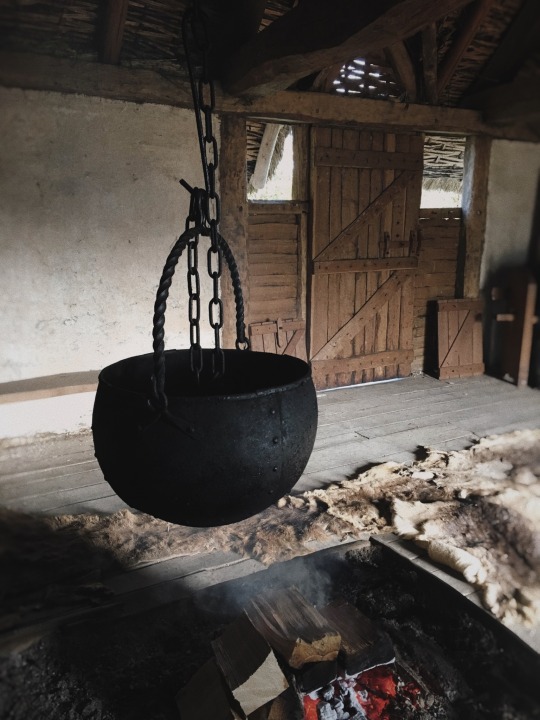
I would live here.
#anglo saxon#skyrim vibes#dark cottagecore#slow living#slow life#a quiet style#old style#adventurecore
174 notes
·
View notes
Text
Dear means 'valued; precious; beloved'. However, in certain expressions it also means 'expensive', such as in to cost dear. This meaning, inherited from Proto-Germanic, became dominant in cognates of dear, such as Dutch duur, German teuer, and Swedish dyr. The infographic tells you the whole story.
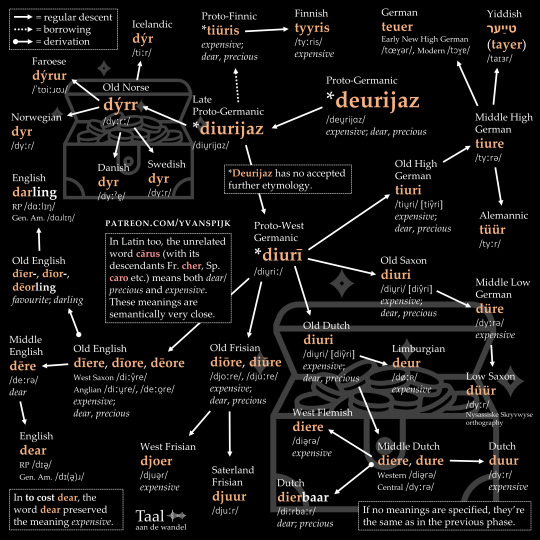
#historical linguistics#linguistics#language#etymology#english#dutch#german#low saxon#frisian#old frisian#old saxon#old high german#old english#old dutch#middle high german#middle dutch#middle english#middle low german#lingblr#proto-germanic#proto-west germanic#yiddish#west flemish#limburgian#saterland frisian#faroese#icelandic#norwegian#swedish#danish
135 notes
·
View notes
Text

i bring you my medieval recreation of the crash fic (thanks to the bayeux tapestry website thingy)
#my credentials are that i have an english language and literature degree#pls don't fact check my old english too hard i spent way too long trying to get it somewhat okay using several websites and sources#shoutout to the bosworth-toller anglo-saxon dictionary for being unusable as always great job guys#sometimes you spend an hour looking up old english vocabulary and grammar rules for the silliest fandom joke ever and thats okay#joker out
43 notes
·
View notes
Text
A lil book I bought recently to treat myself. It contains all surviving prose texts in the Old Saxon language and was printed in 1899! 😍




6 notes
·
View notes
Text

Where has the horse gone? Where is the rider? Where is the giver of gold? Where is the feasting? Where are the joys of the hall?
82 notes
·
View notes
Text

1,500-year-Old Anglo-Saxon Cemetery Found in UK
One of the most notable discoveries was the burial of a teenage girl and child.
Archaeologists in the United Kingdom have announced a major historical discovery dating back to as early as the 6th century after finding the buried remains of over 20 people alongside a range of grave goods including knives, jewelery and pottery vessels, officials said.
Scientists working on the National Grid’s Viking Link project -- construction of the world’s longest land and subsea interconnector involving installation of submarine and underground cables between the United Kingdom and Denmark -- have dug 50 archaeological sites along the onshore cable route since 2020, according to a statement from Wessex Archaeology in the United Kingdom.
“The wealth of evidence recovered is shedding light on life across rural south-east Lincolnshire from prehistory to the present day, with highlights including a Bronze Age barrow and a Romano-British farmstead. The most striking discovery, however, is the remains of an Anglo-Saxon cemetery,” according to Wessex Archaeology.
“The burials in the cemetery deliberately focus on an earlier Bronze Age ring ditch and indicate the funerary landscape was long established,” scientists said. “Archaeologists uncovered the buried remains of over 20 people alongside a range of grave goods including knives, jewellery and pottery vessels. From these 250 artefacts, experts know the cemetery dates to the 6th and 7th centuries AD.”
Among some of the most notable discovery was the burial of a teenage girl and a child, both of whom lay on their sides with the child tucked in behind the older girl, officials said.
“Two small gold pendants set with garnets and a delicate silver pendant with an amber mount were recovered from around the teenager’s head or chest, together with two small blue glass beads and an annular brooch,” according to Wessex Archaeology.
The relationship between the child and the teenager is not yet known -- and may never be -- but scientists are now conducting research and analysis on the subjects, including isotope and Ancient DNA analysis of the skeletal remains.
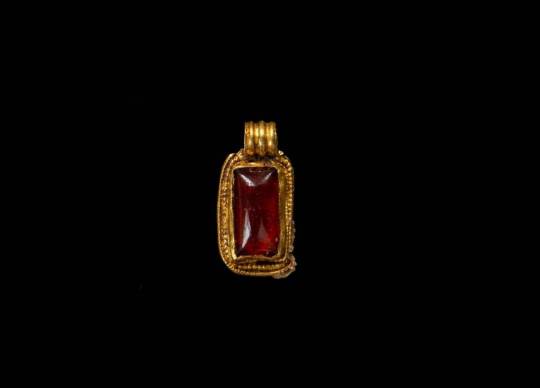
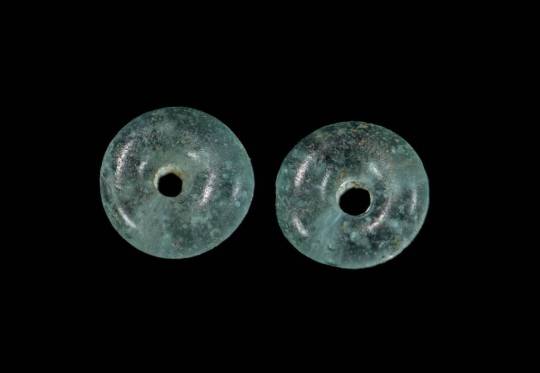
Officials say that this critical research could help to identify “familial relationships and broader genetic links both within this community and between others in the region, and the movement of people in wider society.”
“I really enjoyed being part of the project. It was surprising how many artefacts we found across the route - the gold Anglo-Saxon pendant from the burial ground was a highlight as was the outreach with the local communities to share what we found,” said Peter Bryant who led the project for Viking Link. “It has been very interesting and exciting to help unearth the hidden treasures that have lain dormant for hundreds of years, in such a careful way.”
Specialists will also be looking at the artefacts discovered on the burial site as well as the layout of the cemetery in hopes of learning more about the economic, cultural and social factors affecting this specific community, “including the import of exotic goods and the health of those buried within different parts of the cemetery,” according to Wessex Archaeology.
“Although many Anglo-Saxon cemeteries are known in Lincolnshire, most were excavated decades ago when the focus was on the grave goods, not the people buried there,” said Jacqueline McKinley, principal osteoarchaeologist of Wessex Archaeology. “Excitingly, here we can employ various scientific advancements, including isotopic and DNA analyses. This will give us a far better understanding of the population, from their mobility to their genetic background and even their diet.”
Said Wessex Archaeology following the discovery: “As this research unfolds, we hope to greatly extend our understanding of Anglo-Saxon life and death in the region."
By Jon Haworth.
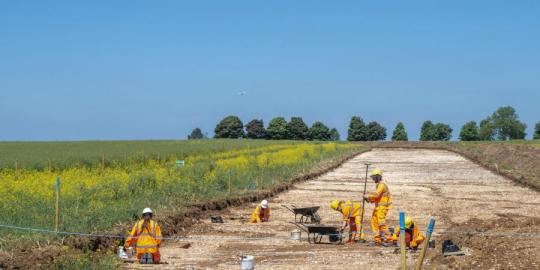
#1500-Year-Old Anglo-Saxon Cemetery Found in UK#ancient graves#ancient tombs#ancient artifacts#archeology#archeolgst#history#history news#ancient history#ancient culture#ancient civilizations#ancient jewelry
40 notes
·
View notes
Text
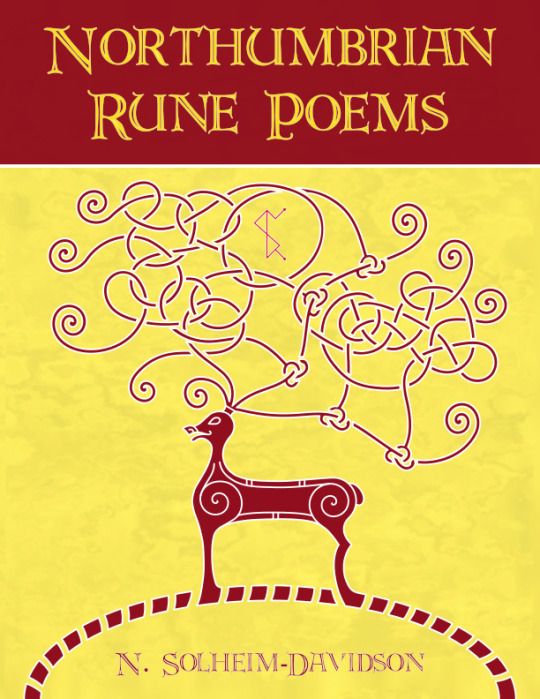
Northumbrian Rune Poems is now officially available for purchase. Digital and physical copies available here.
Inspired by the Old English Rune Poem, Northumbrian Rune Poems centres its focus on the Early Medieval English Futhorc runerows with additional attention paid to the four runes that were in use in Northumrbia. Mixing free verse poetry with kennings found within Old Norse and Old English poetry, Northumbrian Rune Poems is a magical read that breathes new life into an otherwise neglected runerow. Alongside each poem is an Old English adaptation written in a Northumbrian dialect using Old English alliterative style to capture the spirit of the poems in a new light.
#north sea poet#heathenry#poetry#my poetry#nico solheim-davidson#heathen#runes#futhorc#Northumbria#Heathen Poet#Heathen Poetry#north sea rune poems#northumbrian futhorc#anglo-saxon futhorc#anglo-frisian futhorc#rune poems#old english#anglo saxon
84 notes
·
View notes